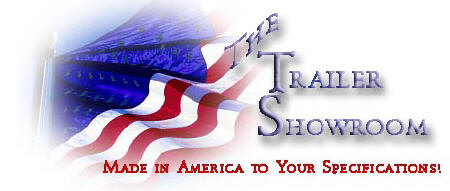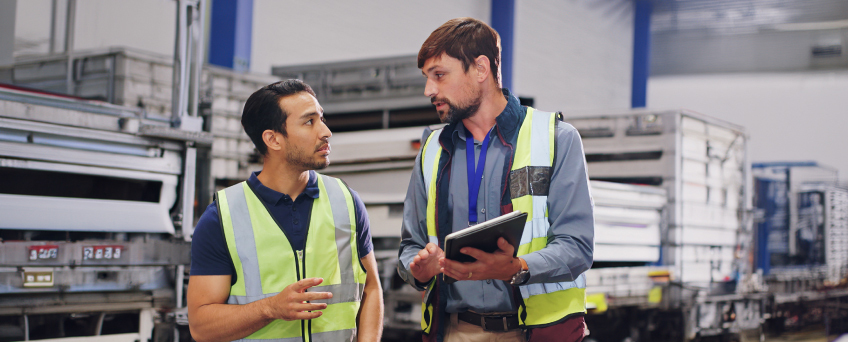Just imagine you buy a trailer that's too tall or too short. In the first case, aerodynamics and cost hit your stability and budget, respectively. In the second case, your cargo cannot be accommodated, resulting in a waste of the invested money. Do you see how you have wasted your valuable money?
When buying an enclosed trailer, generally, buyers assess their hauling needs, cargo type, towing vehicle compatibility, and dimensions. But an often underestimated aspect is the height of the trailer. Considering this aspect is essential to avoid incompatible cargo fits, limited functionality, reduced stability, and unsafe towing.
Information about the height of the trailer is not enough to avoid these issues. You need to be careful in your buying process so that you remember to check all the height-related aspects of your trailer. This blog serves as a guide to help buyers of new enclosed trailers avoid the most common height-related pitfalls in the buying process.
Common Height Mistakes to Avoid When Buying an Enclosed Trailer
Mistake #1 - Not Measuring the Actual Height of Your Cargo
The first mistake people commit is ignoring the need to measure the actual height of the cargo. Manufacturer specifications or estimates from standard cargo sizes don't always work. You must measure it accurately and buy a trailer whose interior height is slightly more than this number. For example, motorcycles with windshields and stacked equipment are taller than their assumed height.
If your cargo barely fits the trailer with its top touching the ceiling, you will either scrape the ceiling or damage the cargo while loading and unloading. Similar damages can occur when you experience road bumps and trailer vibrations during the journey.
Tip: To avoid compromising on your trailer's functionality and utility, always measure the cargo height, including accessories, roof racks, or mounted gear. This allows you to fit the cargo in the trailer comfortably without any damage and have a safe and smooth ride to the destination.
Mistake #2 - Choosing a Trailer That's Too Short for Your Use Case
A short height trailer at affordable prices. Sounds exciting.
The excitement will not last for many days, because such a trailer might not address your cargo transportation requirements.
This is a common mistake trailer buyers commit. They buy a trailer with a 5' or 6' interior height, forbidding its use for taller cargo hauling. It is also not the best option for industry applications that require extra headroom to let people walk in and work, including mobile workshops, online repair centers, and vendors.
Such short trailers have cramped space, which limits their functionality, not offering you the best solution for your transportation needs. Moreover, you will not get good resale value for such low-functionality short trailers.
Tip: Understand your use case and the height of the tallest cargo you will be transporting, and then buy a trailer with the right height.
Mistake #3 - Overestimating the Need for Extra Height
To avoid mistake number two, you invest in a tall enclosed trailer. Smart decision? No, not always.
It's just an additional cost to you, which does not serve your needs. Tall to extremely tall trailers can accommodate cargo of different sizes. But it adds to the extra weight that your towing vehicle will have to carry. Moreover, the wind drag is higher due to the higher height, causing a more turbulent ride, poorer stability, and lower fuel efficiency. You will also face challenges in storing and parking your tall trailer due to the unavailability of such spaces, additional clearance requirements, or extra charges.
Tip: Balance the enclosed trailer height with your real towing needs and load efficiency to ensure smooth rides and long-term value.
Mistake #4 - Ignoring Door Height and Entry Clearance
Happy that your trailer height is enough to fit your cargo? But you forgot to measure the door height. Is it enough to enable the entry and exit of cargo from the trailer?
A common mistake when buying an enclosed trailer is ignoring the door height and entry clearance. The door size might be small, blocking the cargo from entering the trailer. For example, motorcycles with handlebars, rolling carts, and extra accessory space in machines are additional heights in these items that might not fit the door height.
Tip: Verify the heights of the trailer interior and door to avoid facing any difficulty in loading and unloading the cargo. If ignored, your cargo might not be able to enter the trailer, let alone be hauled.
Mistake #5 - Not Matching Trailer Height with Towing Vehicle
Another mistake when buying an enclosed trailer is ignoring the compatibility with the towing vehicle. Here, it means the truck's height.
Taller trailers have more wind resistance and sway. If your towing vehicle is not equally tall, the swaying will be greater, resulting in a less stable and rough ride. Moreover, a difference in the heights of the trailer and the truck can cause visibility issues for the driver, leading to accidents.
The difference in heights also affects the hitch performance in the following ways:
- Either the trailer is nose-up or nose-down, causing uneven towing and instability
- The weight distribution of the cargo gets disturbed
- The stopping distance will increase, causing braking imbalances
- Weight shifts to one axle, causing wear and tear on the tires
Tip: Know the exact height of your towing vehicle, brake controller setup, and power before searching for the right trailer height.
How to Choose the Right Height for Your Needs
The enclosed trailer height must be the perfect height that suits your cargo type, transportation needs, and towing vehicle size. And you can determine this based on the following factors:
Measure your tallest load
Suppose you have a construction business and need a trailer to transport related items - machinery, raw materials, and equipment. You must consider the height of the tallest load that your trailer will carry now or in the future. Based on this height, you can calculate the needed interior height.
Consider walking space and access needs
Moreover, consider the headroom space if people enter, exit, or walk in the trailer for repair and supervision purposes. Their head should not bang the ceiling. Similarly, the cargo and trailer interior must not get scraped while loading and unloading items.
Talk to a trailer specialist if unsure
The best way to go about this is to consult a trailer specialist. Who better than Trailershowroom.com? We have an internal expert team that guides buyers in buying the perfect trailer to suit their application, cargo type, budget, and all other necessary considerations.
Helpful Reads:
Enclosed Trailer Height Options Explained: Find the Perfect Fit For Your Needs
How to Choose the Best Custom Enclosed Trailer - 10 Key Features
How Much Does a Trailer Cost? Everything You Must Know Before Buying
Choosing the Right Trailer Flooring: A Guide on the Best Flooring Materials
Final Thoughts: Height Matters More Than You Think
There is no best enclosed trailer height. But there is a right height for your trailer use for a safe, stable, and efficient journey. If you buy a trailer with the wrong height, you will waste money, lose the trailer's utility value, and face cargo safety issues.
To avoid such a situation, think ahead. Buy an enclosed trailer that suits your cargo height - not only the current items, but also the items that you will transport in the future using that trailer. Do not commit the mistakes of buying a trailer that is too short or tall, failing to measure the actual cargo height, ignoring the door height, and not matching it with the truck's height.
Buy the right height of your enclosed trailer to benefit from its functionality, cargo comfort, stable rides, and long-term value.
Trailer height matters; there is no one-size-fits-all solution. Get the perfect fit, comfort, and clearance for your cargo. Contact us to buy the best enclosed trailer for your needs.
FAQs
-
Q1: What is the standard trailer height?
The standard trailer interior height for most 6, 7, and 8 foot width trailers is 6 feet. The standard trailer height for most 8.5 foot width trailers is typically 7 feet, but and trailer can be manufactured as high as 13'6". The maximum height allowed can vary in a few states, where they allow 14-foot trailers.
-
Q2: Do we require permits for tall cargo hauling?
If the trailer height plus cargo height is greater than the permitted legal limits, you must get relevant permissions. There are roads where your tall cargo may encounter issues, so check the route before the trip.
-
Q3: Is interior height, trailer hitch height, and overall trailer height
all the same?
No, all three are different but have close relations. Trailer height is the height from the ground to its roof. Hitch height refers to the height at which the trailer connects to the towing vehicle. Interior height is the distance from the floor to the ceiling. All of these measurements are necessary factors to ensure cargo fit, less swaying, more stability, and safe towing. Keep in mind that interior height can also be influenced by the addition of optional equipment. An example of this would be adding a ceiling liner. The ceiling liner will decrease the trailer's interior height and must be taken into account.





